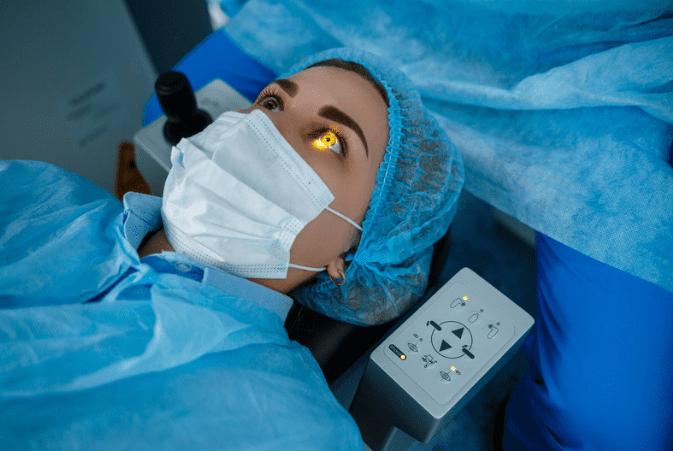LASIK eye surgery is a popular method for correcting vision problems such as nearsightedness, farsightedness, and astigmatism. At Liberty Laser Eye Center, we understand the importance of a smooth and precise procedure to ensure the best outcomes for our patients. A common concern for many considering LASIK is the impact of eye movements during the surgery. This post will explore what happens if you move your eye during LASIK, the measures in place to manage such movements, and why choosing Liberty Laser Eye Center is your best option for a successful LASIK procedure.
Understanding Eye Movements During LASIK
During LASIK surgery, precise cuts are made on the cornea using a specialized laser. It’s crucial for the eye to remain as still as possible during this process. However, involuntary eye movements, such as saccades (rapid movements) and micro saccades (small, jerk-like movements), are natural and can occur during surgery.
What Happens if You Move Your Eye During LASIK?
Advanced Tracking Technology
At Liberty Laser Eye Center, we employ state-of-the-art eye-tracking technologies that monitor eye movements in real time. These systems can detect and compensate for eye movements within milliseconds, adjusting the laser’s position accordingly. This ensures that the laser application is precise, despite any involuntary movements.
Surgeon Expertise and Patient Cooperation
The expertise of the surgeon also plays a vital role. Surgeons at Liberty Laser Eye Center are trained to manage minor movements and guide the patient to focus on a target light during the procedure. Patient cooperation is essential. We advise patients to keep their focus as steady as possible to minimize shifts.
Possible Complications
While rare, significant eye movements that exceed the tracking ability of the laser could potentially lead to complications such as suboptimal corrections or the need for retreatment. Liberty Laser Eye Center takes every precaution to minimize these risks, ensuring a high success rate, as highlighted in our discussion on LASIK eye surgery success rates.
Impact of Eye Movements During LASIK
| Type of Movement | Impact on Surgery | Compensation Technique | Potential Complications if Unmanaged |
|---|---|---|---|
| Minor involuntary movements | Minimal | Eye-tracking systems adjust laser in real time | None, due to effective tracking |
| Moderate involuntary movements | Could affect laser application precision | Manual adjustment by surgeon, continuous tracking | Possible need for minor retreatment |
| Excessive movements | Could misalign the laser treatment area | Procedure pause, recalibration of equipment | Rare but could include suboptimal correction, need for additional treatment |
Why Choose Liberty Laser Eye Center?
Choosing Liberty Laser Eye Center ensures access to advanced LASIK technology, experienced surgeons, and comprehensive patient care. Our commitment to utilizing cutting-edge techniques like topography-guided LASIK and wavefront analysis sets us apart in providing customized vision correction that meets the unique needs of each patient.
FAQ’S
How does the eye-tracking technology work during LASIK?
Eye-tracking technology uses high-speed cameras to monitor the position of the eye several thousand times per second. When movements are detected, the system instantaneously adjusts the laser’s position, ensuring the treatment is applied precisely to the intended area of the cornea.
What should patients do to minimize eye movements during LASIK?
Patients are advised to focus on a fixed light during the surgery. This focus helps in stabilizing the eye and reduces the extent of involuntary movements. Additionally, being well-rested and relaxed can help minimize anxiety-induced movements.
Are there any pre-operative preparations that help in reducing eye movements?
Yes, patients are encouraged to avoid caffeine and to ensure they have a good night’s sleep before the surgery. A calm and relaxed state of mind can significantly reduce involuntary eye movements during the procedure. Additionally, discussing any concerns with the surgeon beforehand can help alleviate anxiety.
What happens if there is an excessive movement during the procedure?
In cases of excessive movement, the LASIK machine’s fail-safe mechanisms pause the treatment. The surgeon will then recalibrate the equipment and only resume the procedure once the patient is ready and able to maintain focus. This ensures safety and accuracy in the treatment application.
Conclusion
Understanding the impact of eye movements during LASIK and the advanced measures in place at Liberty Laser Eye Center helps alleviate concerns and ensures that patients are well-informed about their treatment options. With the integration of advanced technology and expert care, we prioritize safety and precision in all our LASIK procedures. If you are considering LASIK, remember that choosing expert care, Liberty Laser Eye Center is the best choice for achieving clear and precise vision correction. Our state-of-the-art technology and skilled professionals are committed to providing you with a safe and effective LASIK experience. From pre-operative preparations to post-operative care, we ensure every step is tailored to meet your individual needs.

